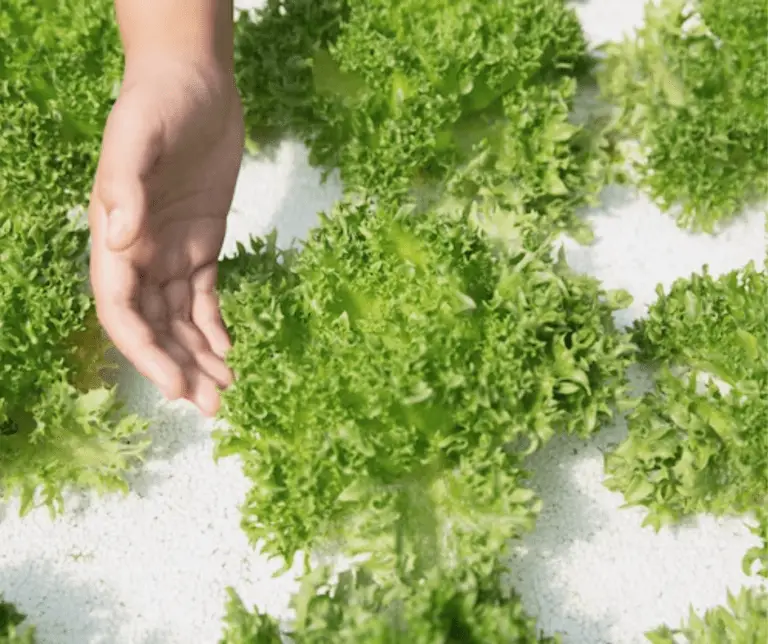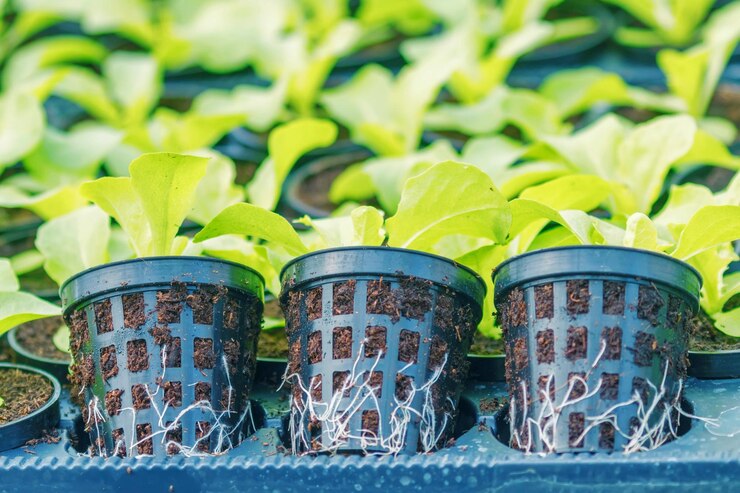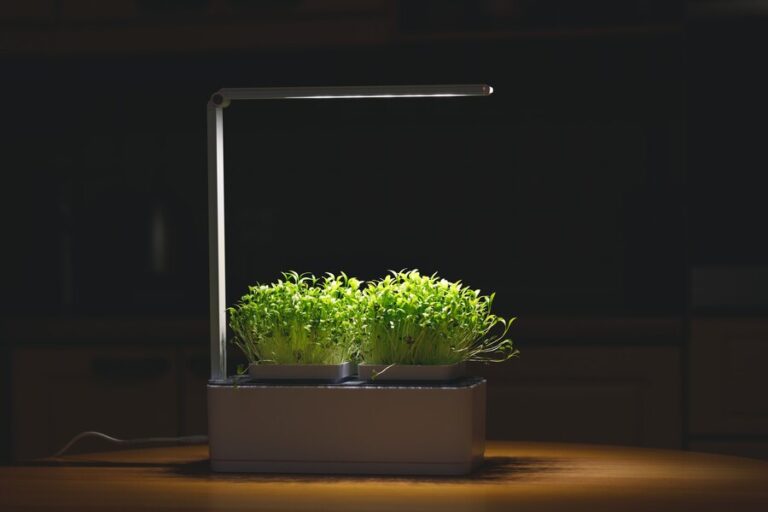Planting, Growing, and Caring for ZZ Plants
Table of Contents
Benefits of ZZ Plants
ZZ plants, scientifically known as Zamioculcas zamiifolia, are popular houseplants with a slew of benefits that make them a favorite among gardening enthusiasts. These resilient plants are prized for their air-purifying qualities, as they efficiently remove toxins like xylene, toluene, and benzene from indoor environments. Additionally, ZZ plants are low-maintenance and drought-tolerant, making them ideal for busy individuals or those with a less-than-green thumb.

In addition to their air-purifying properties, ZZ plants are also prized for their striking appearance. With glossy, dark green leaves that grow in an attractive rosette pattern, these plants add a touch of elegance to any space. Their ability to thrive in low light conditions further enhances their appeal, making them a perfect choice for dimly lit corners or office settings.
Ideal Growing Conditions for ZZ Plants
To ensure optimal growth and thriving ZZ plants, it is vital to provide them with the ideal growing conditions. ZZ plants are known for their adaptability and resilience, making them a popular choice for both beginner and experienced indoor plant enthusiasts. To promote healthy growth, ZZ plants require indirect sunlight and can even thrive in low-light conditions. However, they should be protected from direct sunlight, as it can scorch their leaves. Maintaining a steady temperature between 65-75°F (18-24°C) is also crucial for ZZ plants, as they prefer warm and humid environments. Additionally, ZZ plants can tolerate dry air, making them suitable for various indoor settings.
Here’s a tabular summary of the ideal growing conditions for ZZ plants (Zamioculcas zamiifolia):
| Aspect | Condition |
| Light | ZZ plants are tolerant of a wide range of lighting conditions. They can grow in low-light conditions, but they may become leggy if not given enough light. Place them in a bright, indirect light spot, preferably in a room with south-facing windows. Avoid direct sunlight to prevent leaf scorching. |
| Soil | ZZ plants are not overly picky about their potting medium. Most standard potting mixes should suffice, as long as they are well-draining. If additional drainage is needed, mixing in perlite or sand can help. |
| Watering | ZZ plants are highly drought-tolerant. Water them every couple of weeks, as they grow from rhizomes that store water under the soil. Overwatering can lead to root rot. |
| Temperature | ZZ plants prefer a moderate to warm environment, ideally between 60 -75°F (15- 24°C). Keep them away from cold drafts or central heating. |
| Humidity | While ZZ plants naturally thrive in humid conditions, they can adapt to low humidity indoors spaces as well |
| Fertilization | ZZ plants can be fertilized with a regular houseplant fertilizer a few times a year. |
| Cleaning | To maintain their naturally shiny leaves, gently wipe away dust and debris with a damp washcloth. Avoid using commercial leaf shine products, as they can clog the plant’s spores. |
ZZ plants thrive in well-draining soil, as they are susceptible to root rot if their roots sit in waterlogged soil for extended periods. A recommended soil mix for ZZ plants consists of a combination of potting soil, perlite, and sand to promote proper drainage. It is essential to allow the soil to dry out partially between waterings to prevent overwatering, which can lead to root rot. ZZ plants also benefit from occasional fertilization during the growing season to provide them with essential nutrients for healthy growth. By ensuring these ideal growing conditions are met, gardening enthusiasts can enjoy lush and thriving ZZ plants in their indoor spaces.

Choosing the Right Pot for Your ZZ Plant
When choosing the right pot for your ZZ plant, it’s important to consider the root system and growth habits of this resilient houseplant. Opt for a container that provides good drainage to prevent waterlogging which can lead to root rot. A porous material like terracotta or a pot with drainage holes at the bottom will help maintain proper soil moisture levels and promote healthy root development. Additionally, selecting a pot that is slightly larger than the current root ball of your ZZ plant will allow room for growth without overwhelming the plant.
The material of the pot can also affect the overall health of your ZZ plant. Avoid using containers made of non-breathable materials like plastic as they can trap excess moisture and hinder airflow around the roots. Instead, choose a breathable pot that will help regulate soil moisture and air circulation, creating a more hospitable environment for your ZZ plant to thrive. Remember, the right pot choice can make a significant difference in the well-being and growth of your ZZ plant.

Watering Tips for ZZ Plants
When it comes to watering your ZZ plant, it’s essential to remember that less is more. ZZ plants are known for their ability to thrive in low-light and drought-like conditions, making them incredibly resilient and low-maintenance. Overwatering is one of the most common mistakes made with ZZ plants, as they prefer to dry out between waterings.
To determine whether your ZZ plant needs water, simply stick your finger into the soil up to about an inch deep. If the soil feels dry, it’s time to water. However, if it still feels moist, it’s best to hold off on watering to prevent root rot. Remember, it’s always better to underwater than to overwater when it comes to ZZ plants.
Here are some watering tips for ZZ plants:
| Aspect | Tip |
| Frequency | Water ZZ plants sparingly. Allow the soil to dry out completely between waterings. Overwatering can lead to root rot. Check the top inch of soil; if it feels dry, it’s time to water again. |
| Method | Water at the base of the plant, avoiding the leaves. ZZ plants dislike wet foliage. Use a watering can or a narrow spout to direct water to the soil. |
| Drainage | Ensure that the pot has adequate drainage holes. Excess water should be able to escape freely. Remove any standing water from the saucer beneath the pot. |
| Seasonal Variation | Adjust watering frequency based on the season. During the growing season (spring and summer), water more frequently. In fall and winter, reduce watering as the plant’s growth slows down. |
| Temperature | ZZ plants prefer room temperature water (around 60-75°F or 15-24°C). Avoid using cold water directly from the tap. |
| Avoid Stagnant Water | ZZ plants dislike sitting in stagnant water. Empty the saucer after watering to prevent waterlogged roots. |
| Observation | Keep an eye on the plant. If the leaves start to droop or turn yellow, adjust your watering routine accordingly. |
Sunlight Requirements for ZZ Plants
ZZ plants are known for their ability to thrive in low light conditions, making them an excellent choice for indoor spaces with minimal sunlight. These hardy plants can adapt to a wide range of light levels, from low light to bright indirect light. While ZZ plants can tolerate low light, they will grow best in bright indirect light, which helps promote healthy growth and vibrant foliage. Placing your ZZ plant near a window where it can receive filtered sunlight or in a well-lit room will help ensure its optimal growth and overall appearance. Remember to rotate your ZZ plant periodically to ensure even exposure to light and prevent it from leaning towards the light source.
Here’s a summary of the sunlight requirements for ZZ plants:
| Aspect | Condition |
| Light | ZZ plants are tolerant of a wide range of lighting conditions, making them well-suited for indoor growing. They can thrive in low-light conditions, but be cautious: insufficient light may cause them to become leggy. Opt for bright,indirect light by placing them in a room with south-facing windows. Avoid direct sunlight, as it can scorch their leaves. |
It’s important to note that ZZ plants are sensitive to direct sunlight and can get sunburned if exposed to harsh sunlight for extended periods. Avoid placing your ZZ plant in direct sunlight, especially during the intense afternoon sun, as this can lead to scorched leaves and overall stress on the plant. While ZZ plants are relatively forgiving when it comes to light conditions, it’s best to strike a balance by providing them with bright indirect light while protecting them from direct sun exposure to maintain their health and vitality. With the right amount of light, your ZZ plant will continue to thrive and bring a touch of greenery to your indoor space.

Fertilizing Your ZZ Plant
Fertilizing your ZZ plant is key to ensuring its optimal growth and health. These hardy plants have low fertilizer requirements, and over-fertilization can lead to nutrient imbalances and potential damage. To maintain the well-being of your ZZ plant, it is recommended to fertilize sparingly during the growing season, typically from spring to early fall. A balanced, water-soluble fertilizer diluted to half the recommended strength can be applied once a month.
It’s essential to monitor your ZZ plant’s response to fertilization, as signs of over-fertilization may include leaf browning, stunted growth, or even root damage. Remember that less is often more when it comes to fertilizing ZZ plants, and a cautious approach can help prevent nutrient buildup in the soil. By providing the right amount of nutrients at the appropriate times, you can support the growth and vitality of your ZZ plant effectively.
Preventing Common Pests on ZZ Plants
Pests can be a common issue when it comes to ZZ plants, but there are steps you can take to prevent infestations and keep your plant healthy. One effective method is to regularly inspect your ZZ plant for any signs of pests such as mealybugs, spider mites, or scale insects. Catching any potential problems early on can help prevent them from spreading and causing significant damage to your plant.
In addition to regular inspections, another preventative measure is to ensure your ZZ plant is in optimal growing conditions. Pests are more likely to attack plants that are stressed or weakened, so providing the right amount of light, water, and nutrients can help keep your ZZ plant strong and resilient against potential pests. By practicing good plant care habits and being proactive in monitoring for pests, you can enjoy a thriving ZZ plant free from infestations.
Pruning and Propagating ZZ Plants
ZZ plants are known for their low maintenance and resilience, making them a popular choice for indoor plant enthusiasts. When it comes to pruning ZZ plants, it is important to remove any yellowing or damaged leaves with clean, sharp scissors. Trimming back any leggy stems can also help promote a fuller appearance and encourage new growth. Propagating ZZ plants can be done through division, where you carefully separate the rhizomes and roots to create new plant starts. This process can help expand your ZZ plant collection or share these hardy plants with friends and family.

Propagation of ZZ plants through division is a straightforward process that can be done during the plant’s active growing season for the best results. When dividing ZZ plants, ensure each new plant has a healthy root system and a few rhizomes attached to support growth. Plant these divisions in fresh potting soil and keep them in a warm, bright location while they establish themselves. With proper care and attention, your propagated ZZ plants can thrive and bring beauty to your indoor garden.
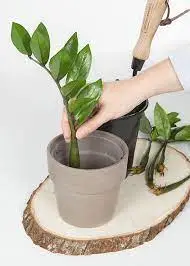
Signs of Overwatering or Underwatering Your ZZ Plant
Overwatering or underwatering your ZZ plant can have detrimental effects on its overall health and appearance. One common sign of overwatering is yellowing or browning of the leaves, accompanied by wilting or mushy stems. The soil may also have a foul odor or feel excessively damp to the touch. On the other hand, underwatering can cause the ZZ plant’s leaves to become dry, crispy, and eventually start to curl. The soil may appear dry and hardened, and the plant may droop from lack of hydration. Monitoring the moisture levels in the soil and adjusting your watering schedule accordingly is crucial to maintaining a healthy ZZ plant.
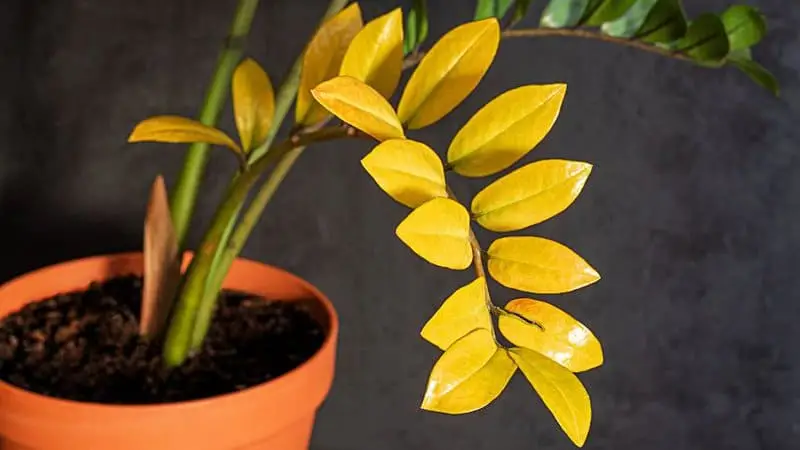
Repotting Your ZZ Plant
Repotting your ZZ plant is a crucial aspect of its care routine that should not be overlooked. As the plant grows, it may outgrow its current pot, leading to issues such as rootbound conditions that can hinder its growth and overall health. When selecting a new pot for your ZZ plant, opt for one that is slightly larger than its current pot to allow for sufficient root expansion. Ensure the new pot has drainage holes to prevent waterlogging, which can lead to root rot. When repotting, gently loosen the roots and add fresh well-draining soil to provide a nutrient-rich environment for your ZZ plant to thrive.
After repotting your ZZ plant, it is essential to provide proper care to help it adjust to its new environment. Avoid overwatering immediately after repotting, as the plant may be in a state of shock from the transplant. Keep the plant in a bright, indirect light location and monitor its watering needs closely to prevent any stress during this transition period. With the right care and attention, your ZZ plant will continue to flourish and beautify your space for years to come.
Creating Humidity for ZZ Plants
To create the ideal humidity levels for ZZ plants, you can incorporate a few simple strategies into your plant care routine. Placing a small humidifier near your ZZ plant can help maintain the necessary moisture in the air, mimicking its natural tropical environment. Additionally, grouping your ZZ plants together or placing them on a pebble tray filled with water can create a microclimate of increased humidity around the plants, aiding in their growth and overall health. By implementing these easy methods, you can ensure that your ZZ plants thrive in an environment that promotes optimal growth and vitality.
Dealing with Yellowing Leaves on ZZ Plants
Yellowing leaves on ZZ plants can be a cause for concern for many plant owners, as they can indicate underlying issues that need to be addressed promptly. One common reason for yellowing leaves is overwatering, which can lead to root rot and poor oxygen circulation within the plant. To remedy this, it is essential to adjust the watering frequency and ensure proper drainage in the plant’s pot. Additionally, yellowing leaves can also be a sign of nutrient deficiencies, particularly nitrogen or iron. Consider using a balanced, water-soluble fertilizer to provide the necessary nutrients for your ZZ plant to thrive and maintain its vibrant green foliage.
Another potential cause of yellowing leaves on ZZ plants is inadequate sunlight. These plants thrive in bright, indirect light but can suffer if exposed to direct sunlight for extended periods. Assess the plant’s positioning and ensure it receives the appropriate amount of light for optimal growth. If necessary, consider moving the plant to a location with better lighting conditions to prevent further leaf discoloration. By addressing these factors and providing the necessary care, you can help your ZZ plant regain its health and vitality.
ZZ Plant Care During Winter Months
During the winter months, it is essential to adjust your care routine for ZZ plants to ensure they thrive despite the colder temperatures and decreased sunlight. These hardy plants are known for their ability to withstand low light conditions, making them a popular choice for indoor spaces during the winter. To maintain the health of your ZZ plant during this time, it is crucial to reduce watering frequency as the plant’s growth slows down in response to lower light levels. Overwatering can lead to root rot, so it is advisable to allow the topsoil to dry out between waterings and ensure proper drainage to prevent waterlogging.
In addition to adjusting watering practices, providing adequate humidity levels can also benefit ZZ plants during the dry winter months. Indoor heating systems can significantly reduce humidity levels, leading to dry air that may negatively impact your plant. To counteract this, consider placing a humidifier near your ZZ plant or misting its leaves regularly to create a more favorable environment. Maintaining consistent care practices tailored to the winter season will help your ZZ plant stay healthy and vibrant until the arrival of spring.
ZZ Plant Care During Summer Months
During the summer months, it is essential to pay extra attention to your ZZ plants to ensure they thrive in the heat. The increased sunlight and warmer temperatures can lead to faster evaporation of water from the soil, so be sure to adjust your watering schedule accordingly. ZZ plants are known for their drought-tolerant nature, but during the summer, they may require more frequent watering to prevent the soil from drying out completely.
Additionally, summer is the ideal time to fertilize your ZZ plants to support their growth and overall health. Choose a balanced, water-soluble fertilizer and apply it according to the manufacturer’s instructions. Fertilizing your ZZ plants during the summer months will help them maintain their vibrant green color and promote robust foliage growth. Remember to always water your plants before and after fertilizing to prevent any potential burning of roots or leaves.
Troubleshooting Common Issues with ZZ Plants
When caring for ZZ plants, it’s important to be aware of common issues that may arise. Yellowing leaves can indicate overwatering, while drooping or wrinkled leaves might signal underwatering. To troubleshoot these problems, check the soil moisture level by inserting your finger into the soil – if it feels soggy, reduce watering frequency; if it’s dry, increase watering. Additionally, ensure your ZZ plant is not receiving too much direct sunlight, as this can lead to scorched leaves. Adjusting the lighting conditions and maintaining a consistent watering schedule can help address these issues and promote the health of your ZZ plant.
Another common issue with ZZ plants is the presence of pests such as mealybugs or spider mites. To combat these unwelcome visitors, gently wipe the affected leaves with a damp cloth or use insecticidal soap. Regularly inspecting your plant for any signs of pests and taking prompt action can prevent infestations from spreading and damaging your ZZ plant. By incorporating these troubleshooting tips into your plant care routine, you can enjoy a thriving and beautiful ZZ plant in your indoor space.
Here are some common issues that ZZ plants (Zamioculcas zamiifolia) may face, along with troubleshooting tips to address them:
| Issue | Possible Causes and Solutions |
| Yellow Leaves | Overwatering: Yellow leaves are often due to overwatering. Check the soil moisture and adjust your watering frequency. ZZ plants prefer to dry out between waterings. Excessive Sunlight: If your ZZ plant receives direct sunlight, it can lead to leaf scorching and yellowing. Move it to a spot with bright, indirect light. Pests: Inspect both sides of leaves and stems for signs of pests. Wipe them away with soapy water or alcohol. Acclimation: Newly purchased ZZ plants may develop yellow leaves during acclimation to their new environment. |
| Lack of New Growth | Insufficient Light: ZZ plants thrive in bright, indirect light. If growth is slow, consider providing more light. Stress Factors: Cool temperatures or other stressors can hinder growth. Ensure optimal conditions. Root-Bound: If your ZZ plant hasn’t been repotted in years, its roots may be cramped. Repot in a larger container. |
| Rhizomes Above Soil | Some people mistakenly refer to the ZZ plant’s root bulb as being exposed above the soil line. The ZZ plant grows from rhizomes, which should be buried at least an inch beneath the soil surface. Exposed rhizomes can lead to decay and other issues. Top up the soil or repot if needed. |
| Pest Infestations | Scale Insects: These tiny pests attach to leaves and drink sap. Wipe them away with alcohol or soapy water. Aphids: Look for yellow marks on leaves and tiny green, brown, or black insects on the underside. Remove them manually or use insecticidal soap. Fungus Gnats: These small flies can be controlled by allowing the soil to dry between waterings. |
| Blight | Blight, though uncommon, can affect ZZ plants. It may cause yellowing lower leaves and a mushy appearance. Ensure proper air circulation and avoid excess moisture. Add hydrogen peroxide to the water occasionally. |
Enhancing the Appearance of Your ZZ Plant
To enhance the appearance of your ZZ plant, consider incorporating decorative elements that complement its glossy foliage. Adding a stylish pot or planter that matches your home decor can elevate the overall look of your plant. Additionally, positioning your ZZ plant in an area with proper lighting can accentuate its vibrant green color and showcase its unique architectural shape. Experimenting with different arrangements of multiple ZZ plants in a grouping can create a visually striking display that adds interest to any space. Remember to maintain a consistent watering and fertilizing routine to keep your ZZ plant healthy and thriving, enhancing its beauty even further.
Furthermore, accessorizing your ZZ plant with natural elements like pebbles, moss, or driftwood can enhance its aesthetic appeal and create a harmonious connection with nature. Consider placing your ZZ plant on a plant stand or pedestal to elevate its stature and make it a focal point in your room. Regularly dusting the leaves to keep them clean and glossy can contribute to the overall attractiveness of your plant. By paying attention to the details and investing a little extra care in your ZZ plant, you can transform it into a stunning botanical masterpiece that brings joy and tranquility to your living space.
To Know More About Planting, Growing and Caring For ZZ Plants, Watch This Video.
How can I enhance the appearance of my ZZ plant?
You can enhance the appearance of your ZZ plant by regularly wiping the leaves with a damp cloth to remove dust and keep them shiny. Additionally, you can rotate the plant periodically to ensure even growth and exposure to sunlight.
Can I use a decorative pot for my ZZ plant?
Yes, you can choose a decorative pot for your ZZ plant as long as it has proper drainage holes and is the right size for the plant. Just make sure to repot the plant when it outgrows the decorative pot.
Are there any special ways to prune my ZZ plant for better aesthetics?
You can prune your ZZ plant by trimming off any yellow or damaged leaves with clean scissors. Additionally, you can prune the plant to shape it or encourage new growth by cutting back leggy stems.
How can I prevent yellowing leaves on my ZZ plant?
Yellowing leaves on ZZ plants can be caused by overwatering, underwatering, or lack of sunlight. Make sure to adjust your watering schedule, ensure proper drainage, and provide adequate sunlight to prevent yellowing leaves.
Can I use a humidifier to create humidity for my ZZ plant?
Yes, you can use a humidifier to create humidity for your ZZ plant, especially during dry winter months or in air-conditioned spaces. Alternatively, you can place a pebble tray filled with water near the plant to increase humidity.




